Multi-zone split systems. Advantages over traditional systems, basic information about blocks and refrigerants. Practical recommendations.
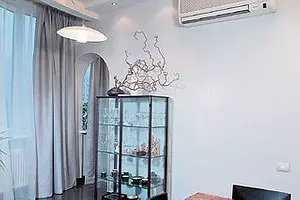
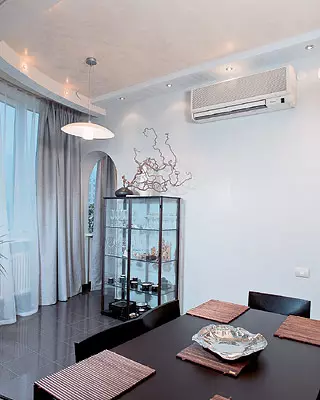
2.2 / 2.5 kW VRV system from Daikin in the interior: Wall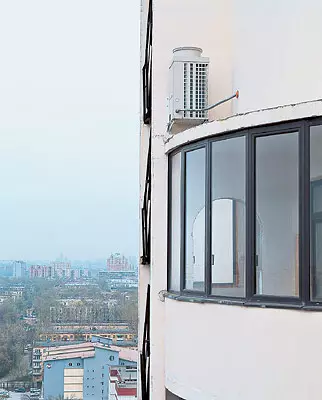
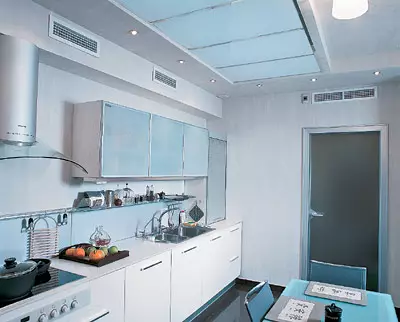
2.2 / 2.5kW VRV system VRV from Daikin in the interior: Channel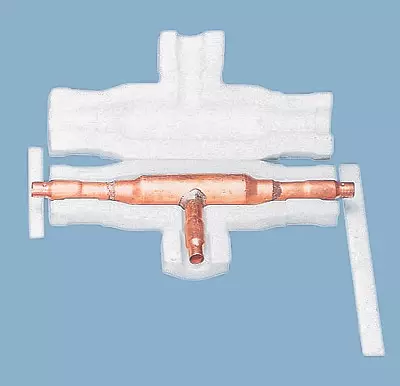
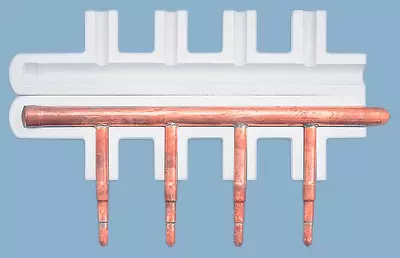
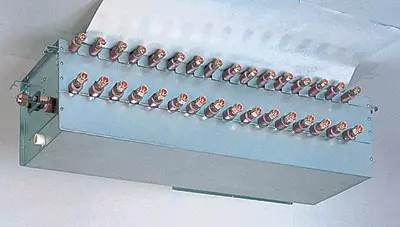
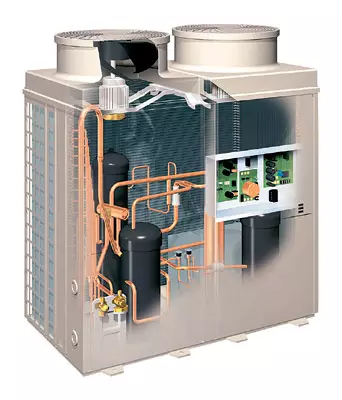
22.4 / 25kw from Daikin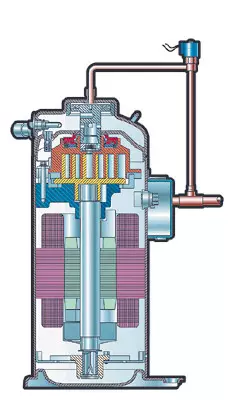
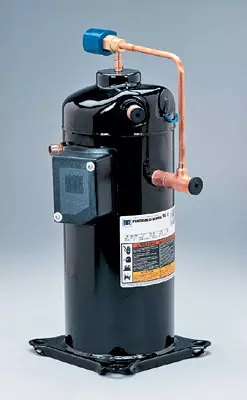
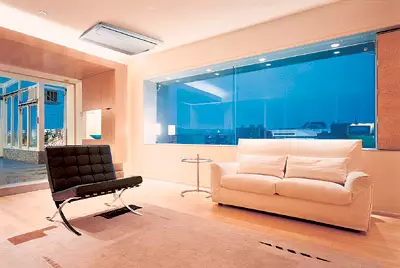
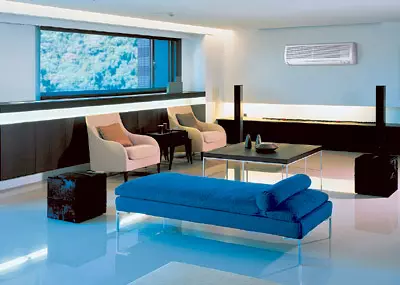
2.2 / 2.5 kW Eco-Multi system from Samsung in the interior: ceiling (upstairs) and wall mounted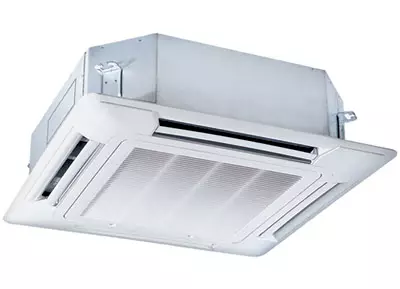
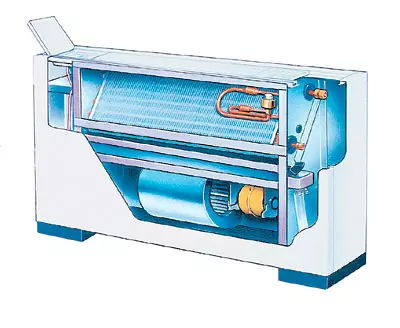
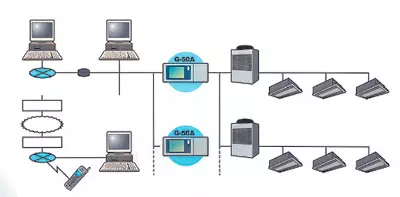
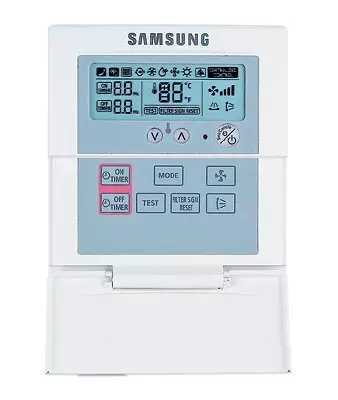
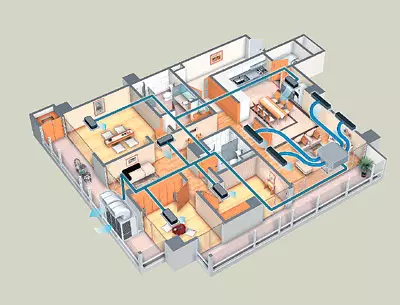
In life, it is often a situation when one room at home is required to heat, and another at the same time cool. Apotom - on the contrary. Here are just technical means that can fulfill these contradictory requirements - once-two and turned around. We will tell about the same, most modern ones-multi-zonal split systems.
Varieties of air conditioning systems
The air conditioning system can be local, centralized or central. Local is designed for one or more interconnected rooms that will either cool or heat. In almost every such system, the noisy compressor, the heat exchanger condenser and the fan are combined in a separate outdoor unit, which is most often exhibited on the street. The evaporator heat exchanger with another fan is combined in the housing of the inner block, which, in turn, leave indoors. And although the blocks are connected by a circulating freon pipeline, the air conditioning system is still obtained into two parts. Therefore, the title add "split" to the title, translated from English meaning "divided". When connecting to one exterior unit up to five internal, which are usually placed in different rooms, the word "Multi" appears, and such systems are called multisplit systems. Daikin brought the number of internal blocks to seven and called its system supermultsplit system. If for any of the internal blocks, and therefore, and for each individual room, you can autonomously choose either heating or cooling, then the "zonal" definition is added. So it turns out the multizone split system. Moreover, a gradual increase in the capabilities of the climate system gives it a new quality: each block can be independent and to switch from heating on cooling and vice versa without affecting the operation of the entire system.Now about the centralized air conditioning system. It, unlike local, is designed to serve several independent premises of a single building (for example, several apartments of a residential building or hotel numbers) using a common pipeline for refrigerant. This pipeline binds all blocks (internal and outdoor) into the general network. Naturally, in some rooms, users may want to heat air, and in other cooling, so each internal unit must be independent of others in the selection of the mode and parameters. The test of a centralized system with an intermediate coolant is water (Chiller-Fencoal system) we wrote in the article "When the water controls the water." But more economical system of direct cooling, in which the refrigerant does everything itself, without "intermediaries". It is such a centralized system that is the MZS.
And finally, the most perfect central air conditioning system. It provides air in each room not only the desired temperature, humidity and purity, but also freshness due to mixing of atmospheric air using ventilation. There are several central system schemes. For example, Daikin calls its Hi-VRV model and combines the MZS (VRV), ventilation with recovery and moisture exchange (HRV) and the control system and diagnostics (Network solutions). Here is also the control of the volume of inspected in each atmospheric air. An example of unification of the MZS with forced supply ventilation for a 7-room apartment is described in our magazine No. 3 for 2000.
A little about the terms
For the first time in the world, the air conditioning system on the refrigerant R22, which could simultaneously cool and heat the air in different rooms, introduced in 1982. VG.OKA Japanese company Daikin. The novelty was called VRV (Variable Refrigerant Volume, or a system with variable refrigerant volume). The name reflects another advantage of the system - the possibility of redistributing performance between working internal blocks due to the single pipeline. Since the VRV abbreviation was registered with Daikin as a brand, other firms, when mastering this class of climatic equipment, had to use the VRF name (Variable Refrigerant Flow, or a system with variable refrigerant flow rate). Sanyo (Eco-Multi), Toshiba (MMS- modular multi System modular multi-domain system), Mitsubishi Electric (City Multi), Samsung (DVM-DIGITAL VARIABLE MULTI, or Multi-Digital Refrigerant Digital Control System), Hitachi (SET-Free- system with free-complete), Haier (MRV-MULTI REFRIGERANT VOLUME- multizone system with variable refrigerant volume), LG (MULTIV).
In order not to be confused in all such air conditioning systems with the same technical idea, domestic climatic firms are increasingly called the equipment of this class by multizoneal split systems, or abbreviated MZS. Once again, it will be prevented that the MSU is fundamentally different from the multisplit system, all the internal blocks of which can work simultaneously or only on the cold or heat only.
Then we will discuss the MS as a centralized air conditioning system. With a significant performance of the outdoor unit, it is possible to connect 16, 32 and even 40 internal blocks with the maximum total length of the pipeline route connecting the outdoor unit with internal, up to 150m. But these indicators are not the limit if you use several outdoor blocks in the system combined into a common "package" - we would withstand the fuses on the introductory stapper. Like the central air conditioning system, the MSS easily connects to the general BMS building system (Building Management System), which is intended to control the operation modes of all networks of each apartment, electric, sewer, air conditioning, ventilation, safety, etc. - seeding console . Recall that through such a system that has access to the Internet, you can "look" into your apartment from any corner of the planet.
Manufacturers of only Asian Region are supplied to the Russian market: Japanese Daikin, Mitsubishi Electric, Mitsubishi Heavy, Hitachi, Fujitsu General, Sanyo, Toshiba, South Korean LG, Samsung, Chinese Haier. Their joint efforts seem to demonstrate the Asian view of the air conditioning system around the air, which is characterized by four completely new qualities:
- modulo- is collected from individual modules, both from cubes;
- adaptability- adapts the most extended length of the pipeline;
- Efficiency is supporting the largest number of internal blocks per external;
- Universality - provides an autonomous choice of work in heating or cooling mode for each internal unit.
It is in the Asian region of the planet that these systems were invented, and at present their production is constantly increasing. Russia with a wide variety of weather conditions and, more importantly, with long periods of inconstancy of these conditions during the year is one of the main consumers of such systems.
On the refrigeration coefficient
The fact that the air conditioning of the room is more economical than, let's say, central heating or electric heating, we have repeatedly wrote in articles about climatic systems. To assess the efficiency of the air conditioner, the indicator of the efficiency is not even used from the school course of physics (efficiency), since it will always be more than 100%, since the energy is not created during air conditioning, but redistributed. Instead, a special refrigeration coefficient is introduced, which is equal to the ratio of the energy of the air transmitted indoors (heat) to the electricity consumed during this case. When cooling it, it is called ENERGY Efficiency Rating, or EER, and when heated is Coefficient of Performance, or COP. For the most energy-efficient climatic systems, it reaches a value of 3 or more, and EER is always less than COP, so more objective.What is the main practical advantage of the MZS? It allows instead of installing two autonomous multisplit systems, one of which would work for heating, and the other for cooling, to limit one. Such a replacement, in addition to reducing the number of external blocks on the facade of the building, also saves about 20% of electricity. The adopter advantage of the MZS is that the total performance of the internal blocks can be 1.3-1.5 times higher than the performance of the outdoor unit. This will allow you to "cover" air-conditioning more rooms than using a multi or supermultciplit system with the same performance. After all, most often either at the same time do not work all internal blocks, or they are not completely loaded. The performance of the MZS can be from 14 to 125kW, but for private housing to 300m2, 22-30 kW is quite sufficient. It is this magnitude of performance that we will limit ourselves. The chime of cheap devices such MSS does not belong. Thus, the VRV system from Daikin from the outer and six internal blocks (5-walled, 1canal) turnkey costs $ 15200.
MZS schemes
So, 1-3 outer blocks and up to 16 internally in the MSS with a capacity of up to 30 kWs are combined with a pipeline to circulate refrigerant to a closed network. The pipeline can be performed according to one of the two-pipe or three-tube schemes. With any of them, one tube is always designed to supply the refrigerant from the inner unit into the outer. The two-pipe diagram recalls the functionality of the multiplit system, that is, all blocks can simultaneously operate in one mode cooling or heating. That is why the refrigerant from the outer block on the second tube is returned either in a liquid state (when cooling) or in a gaseous (when heated), but it is done otherwise than in multisplittes, thereby increased the number of internal blocks served. The brachpipeline MZS from the outer block into each inner tube is fluid refrigerant and simultaneously on the third - gas. In effectly from the difference of two temperature in the room and installed on the control panel - each internal unit can be connected either to the second tube, or to the third, and therefore, or cool, or heat the air. Switching from one mode to another occurs automatic selection of the compound - from the second or third tube. When laying a pipeline to internal blocks, mainly refunctions are used (Refrigerant Net) - collectors and splitters. The first provide a supply to each inner block of one of the tubes, and the second are used to combine several internal blocks operating in the same mode in an independent branch.
All complex process of redistribution of refrigerant, the operation of electric motors (compressors, fans), electromagnetic valves, temperature and pressure sensors control the microprocessor- "brains" of the air conditioner. It optimizes the operation of the compressor (compressors), and also "calculates" the exact distribution of refrigerant according to the branches of the pipeline. An inverter technology helps him that creates a smooth change in the speed of rotation of all engines operating in the system. It very accurately regulates the performance of the compressor or fan, so it supports the temperature in the room with an accuracy of 0.5 ° C. Recall that in the usual air conditioner (without inverter), the performance changes simply turning on and off the compressor (that is, controlled by the time of operation of the compressor).
Such firms as Mitsubishi Heavy, Daikin, Sanyo, Fujitsu General, offer predominantly three-pipe MZS, and the rest of the above two-pipe. Mitsubishi Electric in its City Multi R2 series implements an intermediate solution: a special Special Sun Controller with two tubes ensures that simultaneous cooling of some rooms and heating of others are possible. A mixture of liquid and gaseous phases of the refrigerant is supplied to the second tube from the MZS, which is then divided into the entire controller. It is a device size with an internal unit, equipped with an additional heat exchanger, with which it is possible to achieve any relationship between the liquid and gaseous phases of the refrigerant from the outer block. It is essentially a redistribution of heat (which freon is absorbed in cooled rooms) along the heated premises using the individual branches of the pipeline. When directly connected to the port of the Sun-Controller, the internal unit will work autonomously, that is, as in three-pipe MZS. When you connect to one port, several blocks forming an independent branch, they can all operate only in one mode - for heating or cooling, that is, as with a two-pipe MZS. All calculations and switching performed microprocessor MSS.
All MZS provides the OMS Oil Redistribution feature (OIL Management System), which eliminates the effects of the compressor bearing "dry". It not only supports the oil level in all compressors constant, but also periodically returns to the outer block of the oil that has been in the pipeline along with freon. So, the OMS company TOSHIBA returns the oil is hourly.
Features of the design of external blocks
Outdoor blocks of low performance (up to14kW) contain one inverter compressor, which ensures accuracy of maintaining the temperature in the range of 0.5s. But already in the following in the model range of the outer block (over 22kW), two compressors are installed, one normal, and the other inverter. The first, cheaper, ensures the level of performance, and the second retains the accuracy of temperature maintenance. With such a combined technology, an inverter compressor is first included, and when its performance becomes not enough, a normal compressor is connected to all its power, and the missing performance supplies an inverter partner. If there is also a third compressor, with further performance growth, it also connects in the same way, and the performance of the inverter decreases again. The combined technology used by most firms reduces the cost of equipment compared to the inverter technology and ensures the accuracy of the temperature in the room in the range of 0.5s, which is 2 times higher than with a conventional compressor.True, there are other solutions. So, Sanyo and Fujitsu General firms do not use the inverter, and the performance changes discretely. Moreover, Sanyo does not produce inverter models at all, and in its multizone system Eco-Multi uses a vertical SCROLL compressor model SuperPC with three adjusting valves (bypass). The performance of one of the compressors changes discretely, for example, the SPW-CR903GVH8 model is equipped with 16 levels of performance. It is 10% cheaper than the inverter model of similar performance and performs the same functions, just not smoothly, but discretely. Afirma Fujitsu General in its MSS model AOY90TPA uses a 3compressor with bypass. Mitsubishi Electric company, on the contrary, applies only inverter compressors, excluding in a single-compressor model PURY-P200YMF-C increased starting currents.
Externally, the housing of multicompressor outer blocks looks like a section-consisting of interconnected sections. Almost all of the listed firms use air cooling of the outdoor condenser using a powerful axial fan, but, for example, Mitsubishi Electric in its City Multi WR2 series offers water cooling. It is very effective, only you need to establish an outdoor unit in a room that excludes water freezing.
| Firm | Model | Cold / heat performance, kW | Connection scheme | Type and number of compressors | Eer / Cop coefficients | Dimensions (VSH), mm |
|---|---|---|---|---|---|---|
| Daikin. | Rseyp8kjy1 * | 22.4 / 25. | 3-pipe | Scroll, 2. | 3/3,2 | 12801220690. |
| Mitsubishi Heavy | FDCP224HKXE2B * | 22.4 / 25. | 3-pipe | Scroll, 2. | 2.4 / 3.2. | 14501350600. |
| Mitsubishi Electric | PURY-P200YMF-C * | 22.4 / 25. | 2-pipe | Scroll, 1. | 2.6 / 3.14. | 1715990840. |
| Sanyo. | SPW-CR703GVH8 * | 22.4 / 25. | 3-pipe | Scroll, 2. | 2.5 / 3. | 1218883883. |
| Hitachi. | RAS-8FSG. | 22.6 / 26,1 | 2-pipe | Scroll, 2. | 2.9 / 3.05 | 1645950750. |
| Fujitsu General | AOY90TPA * | 28/31.5 | 3-pipe | Scroll, 3. | 3/3,15 | 13801300650. |
| Toshiba. | MM-AO224ht. | 22.4 / 25. | 2-pipe | Scroll, 2. | 2.8 / 3.05 | 1700990750. |
| Samsung | RVMH060GDMO. | 16/18. | 2-pipe | Dig. Scroll, 2. | 2.86 / 3.05 | 1270930385. |
| LG | Crun1008t0. | 28/31.5 | 2-pipe | Scroll, 2. | 2.7 / 3. | 15191246700. |
| Haier | Au96NFTBHA. | 28/31.5 | 2-pipe | Scroll, 2. | 2.9 / 3.05 | 15801290750. |
| * - all four properties of MZS are supported |
A variety of internal blocks
Since the MZS "has grown" from the split system, it uses the same 5 internal block-ceiling, cassette (single, two-and-four), outdoor, wall and channel. Externally, they may differ only in design, is internally substantial. Therefore, I would like to warn lovers to experiment with a combination of blocks of different brands. The fact is that the microprocessor of the MSS of each manufacturer consists of some of the two consistent parts, one in the outer block, the other in the internal one. That is why an attempt to comply with the MZS from blocks of different manufacturers is doomed to failures of the microprocessor, simply "will not understand each other.
To control the air temperature in the room, you can choose one of two temperature sensors (thermistors) - on the inlet diffusion of the indoor unit or on the control panel. For the first case, the temperature will be maintained, averaged over the entire area of the room, and in the second is predominantly at the location of the control panel. The corresponding settings are made when installing the MSS. True, in the Daikin series, both types of thermal sensors are used, which are automatically included on a specific algorithm, and the setting is not needed.
| Firm | Model | Cold / heat performance, kW | A type | Number of fan speeds | Noise level, dBA | Dimensions (VSH), mm |
|---|---|---|---|---|---|---|
| Daikin. | FXys20 | 2.2 / 2.5 | Channel | 2. | 33/38. | 300550800. |
| Mitsubishi Heavy | FDKJ22HKXE2. | 2.2 / 2.5 | Wall | 2. | 37/42. | 375950194. |
| Mitsubishi Electric | PKFY-P20VAM | 2.3 / 2.6 | Wall | four | 32/33/35/36 | 295815158. |
| Sanyo. | SPW-UR73GH56 | 2.2 / 2.5 | Channel | 3. | 32/36/39 | 310700630. |
| Hitachi. | RPK-1.0FSQ. | 2.9 / 3.3 | Wall | 3. | 31/34/37 | 2981090193. |
| Fujitsu General | AS14. | 4/4.8. | Wall | 3. | 36/37/38 | 3201250195. |
| Toshiba. | MM-KR042. | 4.2 / 4.8. | Wall | 3. | 35/38/42. | 3721150226. |
| Samsung | AVMWH026EAO. | 2.6 / 2.9 | Wall | 3. | 30/32/34. | 245790165. |
| Haier | AS072FabHA. | 2.1 / 2.6 | Wall | 3. | 33/37/41 | 265938182. |
About used refrigerants
The refrigerant coolant, which alternately evaporates and condenses in a closed chain, respectively absorbing and giving it warm. The basic requirements for it: inexpensive, explosive and environmentally friendly, harmless to humans, not igniting and non-corrosive material of the pipeline. In total, the household air conditioners are used by the 4kings of the refrigerant, designed for pressure to 30bar, R22, R407C and R410A.The refrigerant R22 (CHF2Cl) is the cheapest, but contains chlorine, and the one, as is well known, with improper disposal leads to the gradual destruction of the ozone layer of the Earth's atmosphere. K2010g. Production of this refrigerant ceases worldwide for environmental reasons.
The refrigerant R407C is environmentally safe and is a mixture of three refrigerants, R32 (CH2F2), R125 (CHF5) and R134 (C2H2F4), the ratio of which changes along the length of the freonofrovod with a temperature change. This property is called refrigerant zeotropy, and it complicates the control of the air conditioner. Listening to the leakage refrigerant R407s needs to be changed entirely, and not refuel them the system as it could be done at R22 (onsecotropen). The result is the rise in price of the air conditioner service.
The refrigerant R410a is a mixture of two refrigerants, is environmentally safe, almost does not change the condensation temperature (quasiazotropic), but requires 60% higher working pressure than with R22 refrigerant. Therefore, when using it, the design of the air conditioner should be the most reliable. Accurate, mineral oil for lubrication, which is used at R22, can not be used at R407C, nor at R410A, since it is mixed well with them. The conditions of lubrication of the compressor bearings deteriorate, which reduces the durability of the air conditioner. More expensive, ester synthetic oil completely eliminates this problem.
Toshiba uses the active EN378 system in its MMS, controlling refrigerant leakage. This system is designed to secure the user from the depolation of the system. A special RDC1 sensor is installed with the indoor unit with the indoor unit, and in the submission pipeline, the solenoid valve. The weakest link in the pipeline is the place of connecting the inner block of the roller, through which the refrigerant can slowly. Heavier than air, freon will begin to accumulate at the floor level, where you need to position the sensor. Listening to leakage The latter not only emit sound signals, but also turn off the refrigerant feeding to this internal unit with the help of the solenoid valve. After restoring the tightness of the pipeline, it is enough to turn on the solenoid valve, and the internal unit will again become a full part of the entire system.
Basic information about refrigerants for household air conditioners
| Mark. | Components,%: | Temperature change, c | Working pressure, bar (at35c) | Relative energy consumption,% | |||
|---|---|---|---|---|---|---|---|
| R22 | R32 | R125 | R134A. | ||||
| R22. | 100 | - | - | - | - | 12.5 | 100 |
| R407C. | - | 23. | 25. | 52. | 5-7 | 14,1 | 98. |
| R410A. | - | fifty | fifty | - | 0,2 | twenty | 80. |
System management
Three main types of air conditioning systems required the development of three types of control of MSS, called similarly, local, centralized and central. Local control in one internal unit is carried out using a wireless infrared or wired electrical console. Centralized management allows you to manipulate one, several or all MSS blocks from a common wired remote or from a computer. The console can be set any temperature in any room and choose any mode of operation of any indoor unit. You can connect to the MS computer- Personal or built-in using a special manufacturer software. Mitsubishi Electric offers a fairly simple interface device to control and remote diagnostics of the CITY MULTI climate system. In this case, all information about the status of the system and values of the operating parameters is constantly transmitted to the computer. Diagnostation can be carried out using a modem, a CMS-MNF adapter and the Maintenance Tool interface device. For Multiv Air Conditioners from LG provides the ability to control by phone via the Internet.Energy Efficiency Classes Climatic Equipment
According to the 2002/31 / EC European Union directive, starting from 30 yyuna 2003. Each air conditioner should be accompanied by a label with an indication of the energy efficiency class of the device. Depending on the value of the refrigeration coefficient EER, the equipment can be assigned to one of the seven classes - a, b, c, d, e, f or g, and the most energy efficient is considered the class. For each class of equipment (split-system, multiplit-system, chiller-fencule, a runner, a multizone system) EER values will be different. So, for the multisplit systems, this directive recommended the ranges of the values of the coefficients of EER and COPs shown in the table.
Energy Efficiency Classes Multisplit Systems
| Class designation | EER | Cop |
|---|---|---|
| A. | EER> 3,2 | Cray> 3.6. |
| B. | 3,2 = Eer> 3 | 3,6 = CAT> 3.4 |
| C. | 3 = EER> 2.8 | 3,4 = Corps> 3.2 |
| D. | 2.8 = Eer> 2.6 | 3,2 = CAT> 2.8 |
| E. | 2.6 = Eer> 2.4 | 2.8 = CAT> 2.6 |
| F. | 2,4 = EER> 2.2 | 2.6 = CAT> 2.4 |
| G. | 2.2 = EER | 2.4 = CAT> 2.2 |
It is well known that a comfortable microclimate is not only air temperature, but also its humidity and freshness. That is why the MZS provides for the possibility of programmed maintaining the relative humidity of air in the range of 35-60%. However, if the air is prohibited, it will not be able to restore its initial humidity of the MSS. In addition, when installing the MZS, you can install an additional set for a partial submersion (up to 10%) of fresh outdoor air and its heating.
In the case of short-term interruptions in the power grid, which no, no, and happen, the outer block will turn off to protect the compressor from possible problems, but the parameters of the last mode will be previously recorded in the permanent memory of the microprocessor. After stabilizing the power, the air conditioner will turn on automatically, and the microprocessor will restore the parameters of the operation mode from its memory. The inclusion will produce a special restart function ("coronstar"), which is provided in the air conditioning control system of each of the listed firms.
MZS is more complex to multiplit system. All the more harder the automation, the harder it is to determine the causes of its possible malfunction. That is why almost all firms provide for the function of self-diagnosis, which constantly or with a certain periodicity "polls" system in order to search for deviations of parameters from permissible norms. Listening to the detection of such deviations, information about them is issued in the form of combinations of burning LEDs (LED-Light Emitting DIODE) or high-screen digital code display (LCD-Liquid Crystal Display). Sometimes both method can also be used as, for example, Daikin and Sanyo. Mitsubishi Electric, Mitsubishi Heavy and Toshiba provide data on the values of the basic parameters (for example, refrigerant pressure in the pipeline, the value of the start current, the frequency of the inverter) in the form of digital display codes on the control board of the outdoor unit.
Climatic systems are designed for negative atmospheric air temperatures (up to -5c during cooling and up to -15c when heated). Given the insufficiency of this limit for Russia, Daichi has developed a Polyus technology for VRV equipment, protected by a Russian patent and allowing the permissible lower limit of the temperature of the Daikindo -50C equipment.
Mitsubishi Electric has envisaged a constant analysis of the actual ratio of refrigerant components R407C. Based on this analysis, the microprocessor adjusts the pressure and speed of moving the coolant in the pipeline. This allows you to refuel their MZS by this "capricious" refrigerant.
Noise level
The main source of noise during the operation of the MZS is the compressor and the exterior fan. When performing up to 30 kW, almost all firms install a spiral scroll compressor (vertical or horizontal), which works quieter than others. On the noise characteristics of the axial fan, the shape and number of blades have the greatest effect. Three-blade fans with an improved shape of blades (for example, the AIR FOIL FAN FAN model of the company Daikin or Diameter Stealth FAN company TOSHIBA) somewhat reduce the sound pressure level, but it does not fall below 58DB. At close range, this noise is comparable with the sound of the electric shaver when shaving or electrophane when drying the hair. The sound of the working indoor unit is determined by the fan speed - it is higher, the greater the noise. That is why, with multi-stage speed control, each company indicates noise for any speed, starting with minimal when it is usually 30-32 dBA, which corresponds to a quiet conversation.
Warranty and service
Each firm gives a guarantee for 3 years. This term, any malfunction arising from the fault of the manufacturer will be eliminated by free specialists of the technical center, which mounted climatic equipment. The guarantee of the manufacturer's warranty is to fulfill all operating requirements that are specified in the warranty coupon. The coupon itself must necessarily be correctly filled after installing the equipment.Service is associated with the post-warranty period of work of climate technology and therefore, naturally, is paid. The equipment can be delivered to service in one of the authorized centers, not necessarily where the initial installation was carried out. Brands such as, for example, Toshiba, Samsung ("White Guard") and Sanyo ("Polelles") provide the opportunity through the specified climatic firms to exchange air conditioning the old model to the new same class.
Practical recommendations
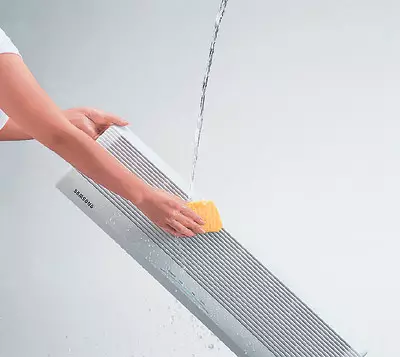
- When choosing a MZS, it should be borne in mind that than south you live, the higher it should be it, and when choosing the performance of the internal block, not only the area of the room, but also the possible number of your guests.
- With partial leakage of refrigerant, it is necessary to remove from the system to its residues, after which add the required number to the required volume, which is replaced again. Especially carefully need to do with Zeotropic refrigerant R407c.
- If you wish, place the internal unit in the home workshop must be necessary even before the installation of the service center for the safe handling of unauthorized fuel and lubricants and conducting welding works near the equipment is necessary.
- A results of the operation for several seasons on separate surfaces of the air conditioner can settle a dense layer of dirt, which will reduce the performance of the device. Therefore, at least once in 2 years, make maintenance with the invitation of a service center specialist even with a completely working air conditioner.
- The wireless control panel of the internal block is convenient to lay in pockets attached to the wall, which will exclude its permanent searches. The notide is relevant for ceiling, cassette and wall internal blocks.
- If you intend to use the climatic system, you will take an extremely permissible minus temperature to which it is designed. A number of firms, such as Daichi, adapts any system for Russian weather conditions, including laid frosts.
- Air supply from the inner block of ceiling or cassette type of standard execution will decrease if the ceiling height is greater than 3m. So you need to choose a special block design for a high ceiling.
The editors thanks the company Daichi, "Aeroproprop", "Arctic", "Euroklimat", Petrospek, "Polelm", "Vertex-Engineering", "White Guard", "Eastern Wind", Mitsubishi Electric, Samsung and LG Electronics representative offices for help in the preparation of the material.
